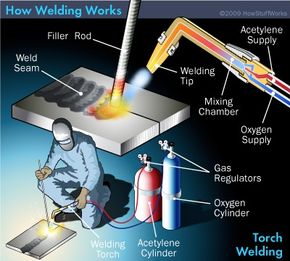The Value of Welding WPS: Making Certain Top Quality and Safety And Security in Your Jobs
The Value of Welding WPS: Making Certain Top Quality and Safety And Security in Your Jobs
Blog Article
The Ultimate Guide to Welding WPS Procedures: A Detailed Review for Welders
In the intricate world of welding, Welding Treatment Requirements (WPS) serve as the foundation of making certain quality, uniformity, and safety and security in welding operations (welding WPS). As we dig into the various parts of a WPS and explore the ins and outs of credentials and qualification, we will uncover the essential role these treatments play in the world of welding.
Value of WPS Procedures
Recognizing the importance of Welding Treatment Requirements (WPS) treatments is vital for making certain the top quality and honesty of bonded frameworks. WPS procedures function as a roadmap for welders, laying out the essential actions, parameters, and materials needed to accomplish an audio weld. By adhering to WPS standards, welders can make sure uniformity in their work, leading to trusted and structurally audio welds.
Among the main reasons WPS procedures are essential is their role in keeping weld top quality and honesty. Following the specified welding specifications and methods outlined in the WPS assists stop defects such as porosity, splitting, or insufficient combination, which can jeopardize the stamina and sturdiness of the weld. Additionally, WPS procedures are important for ensuring compliance with industry standards and codes. By following established WPS standards, welders can demonstrate that their work meets the necessary demands for safety and high quality, offering assurance to clients, examiners, and regulative bodies. In significance, the significance of WPS procedures can not be overemphasized, as they are essential to achieving regular, premium welds that satisfy market requirements and specifications.

Parts of a WPS
A Welding Procedure Specification (WPS) normally comprises vital elements that detail the specific needs for carrying out a weld, making certain consistency and top quality in the welding procedure. The essential elements of a WPS consist of essential variables such as base steels, filler metals, interpass and preheat temperature levels, welding procedures, protecting gases, welding settings, and post-weld warm treatment demands.
Base steels describe the products being joined, while filler metals are made use of to load the space in between the base steels throughout welding. Preheat and interpass temperature levels are vital for regulating the warm input and protecting against issues like breaking or distortion. The welding procedure describes the particular technique to be made use of, whether it's gas metal arc welding (GMAW), protected metal arc welding (SMAW), or one more approach. Securing gases shield the weld pool from atmospheric contamination. Welding positions define the alignments in which welding can be carried out. Post-weld warm therapy might be required to ease tensions and enhance the weld's homes. A comprehensive understanding of these components is crucial for developing a reliable and extensive WPS.

Qualification and Accreditation
Having developed the vital components of a Welding Treatment Specification (WPS), the emphasis now moves towards the vital facets of credentials and accreditation in welding techniques.

Certification, on the various other hand, is the official acknowledgment of a welder's credentials by a relevant qualification body or organization. Welding certifications are normally based upon the certain welding processes, materials, and settings a welder is qualified to deal with. Holding a legitimate welding qualification demonstrates that a welder fulfills market requirements and is experienced to do welding jobs to the called for requirements.
Developing a WPS
To develop a Welding Procedure Specification (WPS) that satisfies sector requirements, cautious factor to consider of welding procedures, products, and functional specifications is important (welding WPS). The primary step in creating a WPS is to recognize the welding procedure to be made use of, such as gas metal arc welding (GMAW) or secured steel arc welding (SMAW) Once the welding procedure is figured out, the next vital aspect is picking the appropriate materials, taking into consideration variables like base metal kind, density, and joint style. Operational parameters such as welding current, voltage, traveling speed, and securing gas structure have to also be meticulously specified in the WPS.

Executing and Checking WPS
Upon finalizing the thorough Welding Procedure Specification (WPS) that carefully details welding processes, materials, functional parameters, and high quality assurance actions, the emphasis shifts to effectively executing and keeping track of the well-known procedures. Application includes ensuring that all welders involved in the task are acquainted with the WPS and follow it thoroughly during the welding process. Reliable execution and monitoring of the WPS are critical for ensuring the honesty, stamina, and safety and security of the welded joints, eventually adding to the overall success of the welding project.
Final Thought
To conclude, understanding and following Welding Procedure Specifications (WPS) is important for welders to make sure quality, consistency, and security in their job. By knowing the elements of a WPS, getting proper credentials and qualifications, developing comprehensive procedures, and applying and checking them properly, welders can boost their skills and effectiveness in welding practices. Complying with WPS procedures is vital for producing top quality welds and conference market criteria.
In the elaborate world of like this welding, Welding Treatment Requirements (WPS) serve as the foundation of making sure quality, uniformity, and safety in welding procedures. The welding procedure lays out the certain strategy to be utilized, whether it's gas metal arc welding (GMAW), protected metal arc welding (SMAW), or an additional technique.To develop a Welding Procedure Spec (WPS) that meets industry standards, mindful factor to consider of welding processes, products, and functional parameters is important. The first action in developing a WPS is to identify the welding process to be made use of, such as gas metal arc welding (GMAW) or shielded steel arc welding (SMAW)Upon settling the extensive Welding Procedure Spec (WPS) that thoroughly information welding procedures, products, operational parameters, and high quality assurance actions, the focus shifts to effectively carrying out and checking the well-known procedures.
Report this page